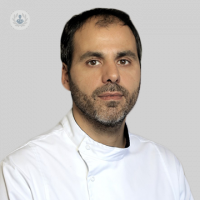Bruxism, stress and neck pain. osteopathic treatment
Written by:One of the possible causes of cervical pain or a tooth pain is bruxism .
Very often, the place where it hurts corresponds only to the location of a symptom, masking the true cause of pain and this in osteopathy is no secret.
Bruxism is the habit of clenching or grinding the teeth, during the day or during the night, consciously or unconsciously, this being often a major problem at night.
When we chew correctly, we support on 4 basic pillars: The canines and the molars. The closure of the TMJ (Temporo-mandibular joint) is extremely strong and powerful, representing a force of 80 to 200 kilos per square centimeter!
Imagine, what would happen if we repeated that same closure for 6-8 hours while we are sleeping all night? It would be like playing sports while we try to sleep, and figuratively it is what happens.
As a result of all this, the bruxist has a greater dental wear and jaw pain , manifests fatigue in the morning when getting up, his neck hurts or suffers cervical pain, has postural imbalances , has trouble opening his mouth or his jaw crackles , suffer migraines or headaches , and a long etcetera.
At MOTEC Osteopathy Center we defend an interdisciplinary work with an occlusion specialist (not any dentist) to protect and try to heal the cause and pain of the bruxist patient through osteopathic work and with a discharge splint with the function of cushioning and distributing excessive forces and tensions.
Osteopathic treatment
From the Osteopathy we will work all the mandibular musculature, cranial sutures, cranial bones, all the cervical-scapular region and its relations with the nervous system by soft cranio-sacral techniques to be able to diminish the state of anxiety with the objective of a better adaptation to the splints or the possibility of not needing them.
Cranial work is very important, since we work the balance through the harmony of the different bones and their relationship with the temporomandibular joint. Also, through soft techniques of cranio-sacral osteopathy, applicable to cranial bones, pelvis, spine and sacrum, we can balance the autonomic nervous system, decreasing the chronic anxiety state if this were the cause.

Some advices
1) When you are aware that you are bruising your teeth you can place the tip of your tongue on the palate, just behind the teeth.
2) Insist on sports practice. Helps to channel stress with endorphin stimulation. These will help us to intervene and reduce the pain.
3) Practice abdomino-diaphragmatic breathing , since this causes a general relaxation.
4) Fold a washcloth, wet it in hot water, twist it and apply on both sides of the face. The heat will relax the tensor muscles of the jaw.
5) Avoid everyday habits such as chewing gum, biting the nails, biting a pen.
6) Behavioral therapy. This therapy roughly helps the patient to abandon habits undesirable or harmful to oneself. Lately it is working in bruxist patients to attribute a series of determined colors to work the central nervous system and to be able to cut this biofeedback.


